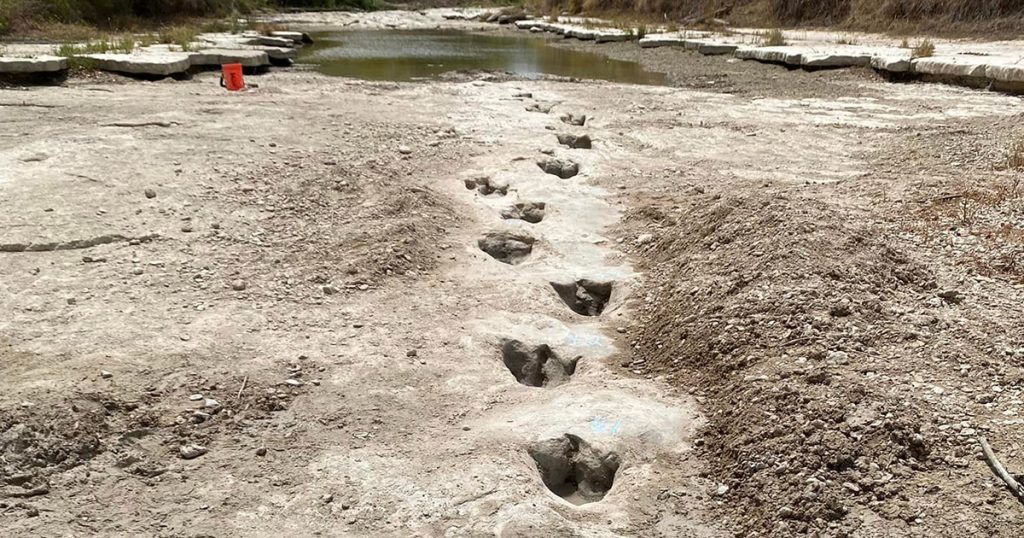Matching dinosaur footprints found more than 3,700 miles apart
The footprints, dating back to the Early Cretaceous period, were found in Brazil and in Cameroon, researchers wrote in a study published Monday by the New Mexico Museum of Natural History & Science. The discovery shows where land-dwelling dinosaurs were able to cross freely between South America and Africa before the two continents split apart millions of years ago.
The study showed that the more than 260 footprints that were examined were imprinted in mud and silt along historic rivers and lakes; the footprints in South America and Africa were separated by more than 3,700 kilometers. Paleontologists discovered that they shared similarities in terms of age, shape, and plate tectonic and geological settings.
According to Louis Jacobs, a paleontologist at Southern Methodist University, dinosaurs left their mark 120 million years ago on a single supercontinent called Gondwana. This supercontinent split off from the larger landmass of Pangea, which was originally the sole continent in the globe.
"One of the youngest and narrowest geological connections between Africa and South America was the elbow of northeastern Brazil nestled against what is now the coast of Cameroon along the Gulf of Guinea," Jacobs, the author of the study, stated. "The two continents were continuous along that narrow stretch, so that animals on either side of that connection could potentially move across it."
According to geologists, the continents that are today known as Africa and South America began to separate some 140 million years ago. The hole was finally filled by the south Atlantic Ocean.
According to Jacobs, as the continents broke apart, basins were created in which rivers flowed and lakes grew. Both sides of the bifurcation have the basins where the footprints were located.
What we discover about dinosaurs ?
According to researchers, three-toed theropods, a subspecies of carnivorous dinosaurs, left the majority of the imprints. Additionally, prints from ornithischians or sauropods were found.
"Plants fed the herbivores and supported a food chain," Jacobs stated. "Muddy sediments left by the rivers and lakes contain dinosaur footprints, including those of meat-eaters, documenting that these river valleys could provide specific avenues for life to travel across the continents 120 million years ago."
Support Here


Comments
Post a Comment